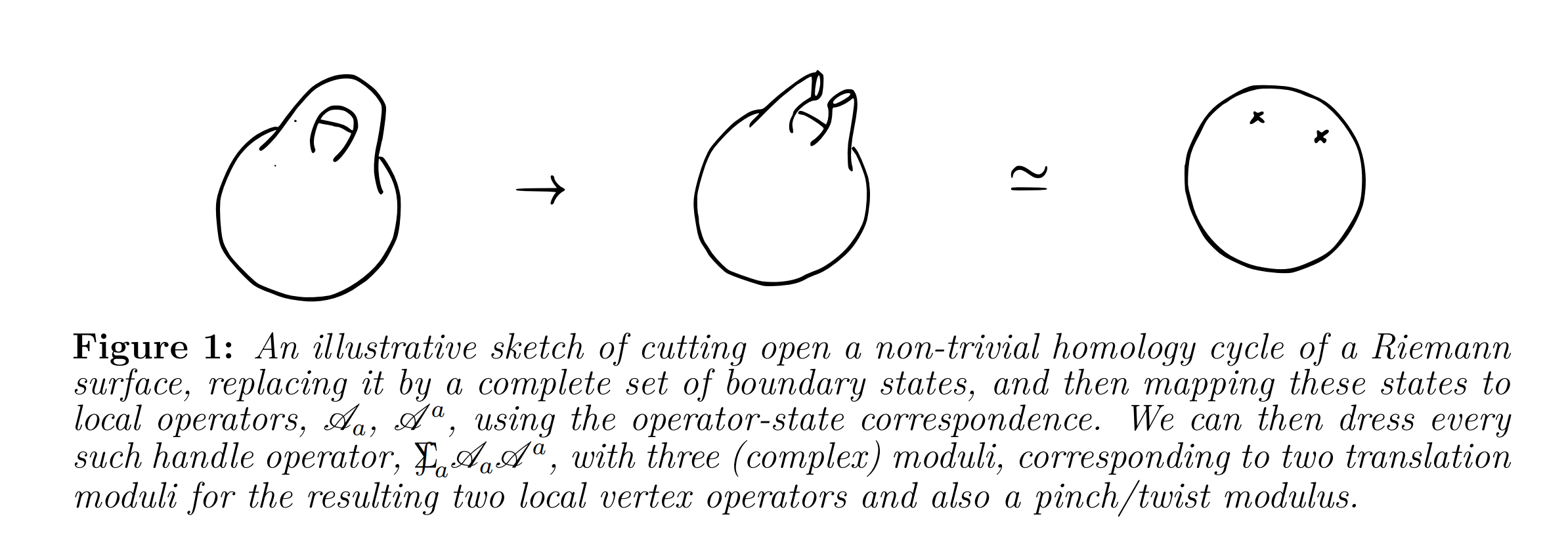There have been a few occasions in recent years where I’ve had the privilege of meeting some truly great physicists, and we got to chat for hours about QFT and strings. Recently, I had the pleasure of finally meeting Dimitri Skliros. I heard a lot of stories about Dimitri over the years, as he has close connections with the University of Nottingham. Four or five years ago, I studied some of his earliest papers having to do with highly excited strings. Around that time I also remember digging around his PhD thesis, and enjoying it very much. It also just so happens that one of my favourite papers in the last two years is also by Dimitri (alongside Dieter Lust). It concerns the study of handle operators in string amplitudes, and as physics papers go I think it is magnificent.
When getting to meet Dimitri this week (I was very excited), we spent a couple hours talking about this paper with Dimitri white-boarding some key technical details. It was honestly a joy, and my hope is that some of the technology could prove very useful for some calculations that Tony and I are currently working on.
The basic idea of the paper (I say that half-heartedly, as it is 328 pages) is to show how to incorporate topological features of Riemann surfaces in string amplitudes. It begins with a detailed and pedagogical discussion of Riemann surfaces and complex structure deformations. They then show for Riemann surface that is a complex manifold, completely specified by a choice of charts and with holomorphic transition functions on the chart overlaps, on any chart one can go to the conformal gauge. Then it is possible to choose a 2D conformal field theory (CFT), and the primaries of the CFT can be mode expanded.
From there, two particularly ingredients of the formalism: 1) bi-local operators called handle operators, and 2) coherent string states, which are local on the string worldsheet but, in general, non-local in spacetime. The definition of coherent string states goes back to Dimitri’s earlier work; they are constructed using DDF operators (these go back to an important paper by Del Giudice, Di Vecchia and Fubini, hence the acronym) and are required to satisfy a number of important properties. What is nice about the DDF formalism is that it allows us to generate the entire physical Fock space, from which we can translate light-cone gauge states into the corresponding covariant vertex operators. The advantage is that this then allows us to use the standard technology to compute string amplitudes. I can review DDF more deeply another time; but the key point for our present purposes is that, in a coherent string state basis, it becomes quite natural under the properties of path integration to cut open the path integral across any cycle of the Riemann surface.
There is a theorem which states that it is possible to cut open (or glue) a worldsheet path integral across any trivial or non-trivial homology cycle. This is where the idea of handle operators come in. Given a canonical homology basis, we can consider a handle and cut the path integral across its cycle (for intuition, Figure 1 from the paper will give some visualisation of the idea), and then we can insert a complete
set of intermediate states in order to incorporate appropriate boundary conditions across the cut cycle.

A significant part of the paper discusses boundary terms and an explicit choice of gluing-compatible and global (modulo U(1)) coordinates (namely, holomorphic normal coordinates). The way things are set-up means we can also still use the operator-state correspondence, which allows us to map these complete sets of states to local vertex operators. Also, the map one can construct from the space of states to the space vertex insertions is conformal, so again an important feature going back to the geometric consideration is that one can also appeal to the standard rules of conformal field theory. Indeed, from this point many of the core concepts in Polchinski’s textbook can be applied in generality. We can compute the normal ordering, the operator-product expansions (OPEs), and so on. The resulting formalism is exact and globally well-defined in moduli space.
What is really nice is how, when all is said and done, all physical loop amplitudes are gauge-invariant and also possess manifest reparametrisation invariance for arbitrary worldsheet curvature and topology.
The paper is filled with a lot of technical detail, which I am working through in hope that we can use some of its machinery. I’m in the process of writing out some technical notes, so if there’s time I’ll put together a few posts explaining these handle operators in more detail and what makes it all work.